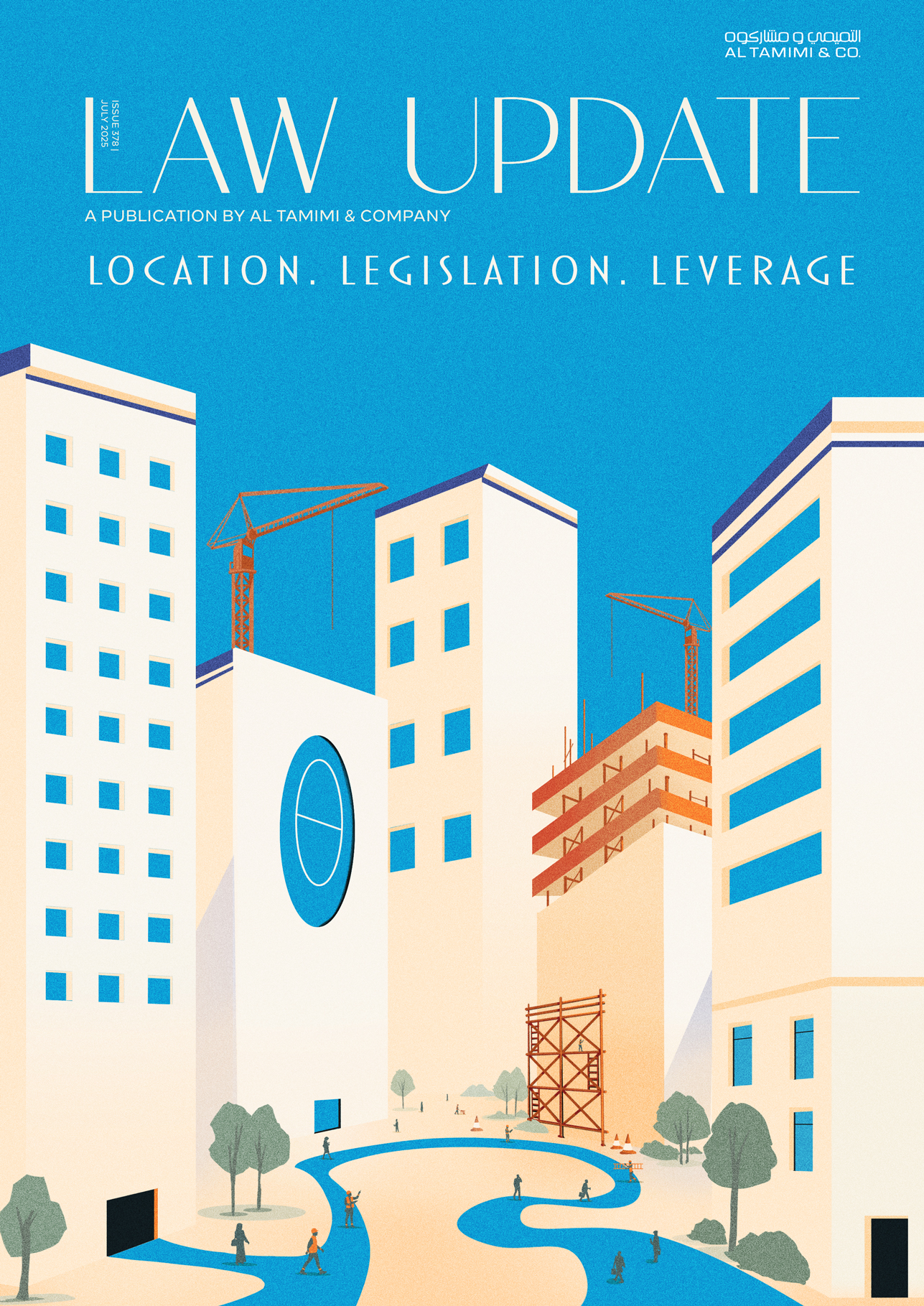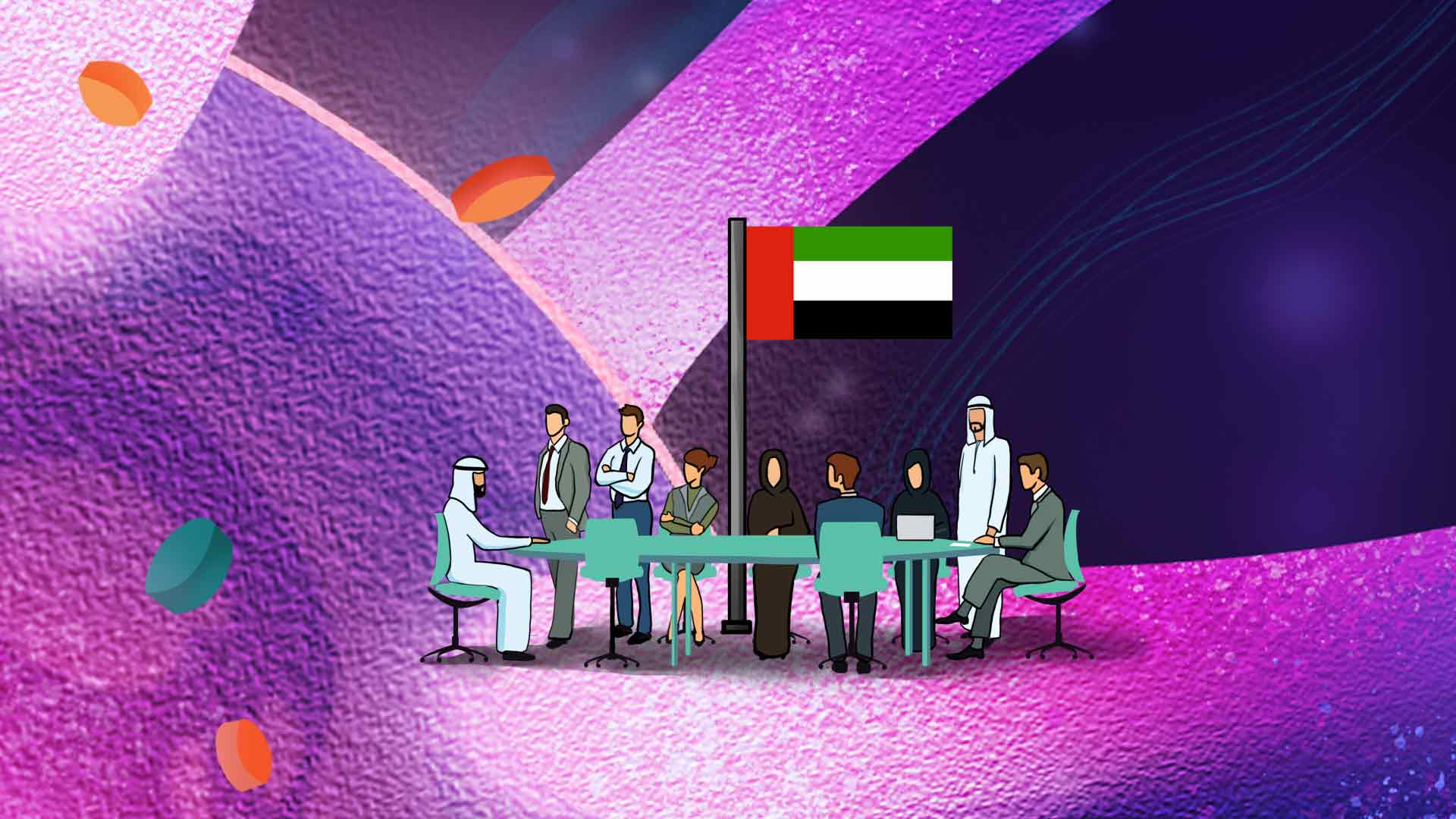- Arbitration
- Banking & Finance
- Capital Markets
- Commercial
- Competition
- Construction & Infrastructure
- Corporate / Mergers & Acquisitions
- Corporate Services
- Corporate Structuring
- Digital & Data
- Dispute Resolution
- Employment & Incentives
- Family Business & Private Wealth
- Innovation, Patents & Industrial Property (3IP)
- Insurance
Find a Lawyer
Book an appointment with us, or search the directory to find the right lawyer for you directly through the app.
Find out more
Real Estate & Construction and Hotels & Leisure
Real estate, construction, and hospitality are at the forefront of transformation across the Middle East – reshaping cities, driving investment, and demanding increasingly sophisticated legal frameworks.
In the June edition of Law Update, we take a closer look at the legal shifts influencing the sector – from Dubai’s new Real Estate Investment Funds Law and major reforms in Qatar, to Bahrain’s push toward digitalisation in property and timeshare regulation. We also explore practical issues around strata, zoning, joint ventures, and hotel management agreements that are critical to navigating today’s market.
As the landscape becomes more complex, understanding the legal dynamics behind these developments is key to making informed, strategic decisions.


2025 is set to be a game-changer for the MENA region, with legal and regulatory shifts from 2024 continuing to reshape its economic landscape. Saudi Arabia, the UAE, Egypt, Iraq, Qatar, and Bahrain are all implementing groundbreaking reforms in sustainable financing, investment laws, labor regulations, and dispute resolution. As the region positions itself for deeper global integration, businesses must adapt to a rapidly evolving legal environment.
Our Eyes on 2025 publication provides essential insights and practical guidance on the key legal updates shaping the year ahead—equipping you with the knowledge to stay ahead in this dynamic market.
The leading law firm in the Middle East & North Africa region.
A complete spectrum of legal services across jurisdictions in the Middle East & North Africa.
-
Practices
- All Practices
- Banking & Finance
- Capital Markets
- Commercial
- Competition
- Construction & Infrastructure
- Corporate / Mergers & Acquisitions
- Corporate Services
- Corporate Structuring
-
Sectors
-
Country Groups
-
Client Solutions
Today's news and tomorrow's trends from around the region.
17 offices across the Middle East & North Africa.
Our Services
 Back
Back
-
Practices
- All Practices
- Banking & Finance
- Capital Markets
- Commercial
- Competition
- Construction & Infrastructure
- Corporate / Mergers & Acquisitions
- Corporate Services
- Corporate Structuring
- Digital & Data
- Dispute Resolution
- Employment & Incentives
- Family Business & Private Wealth
- Innovation, Patents & Industrial Property (3IP)
- Insurance
- Intellectual Property
- Legislative Drafting
- Private Client Services
- Private Equity
- Private Notary
- Projects
- Real Estate
- Regulatory
- Tax
- Turnaround, Restructuring & Insolvency
- Compliance, Investigations and White-Collar Crime
-
Sectors
-
Country Groups
-
Client Solutions

- Law Firm
- /
- Insights
- /
- Law Update
- /
- November 2020
- /
- The new UAE Resolution concerning the Supreme Committee of Medical Liability
The new UAE Resolution concerning the Supreme Committee of Medical Liability
Ahmed Allouz - Partner, Regional Co-Head of Dispute Resolution - Litigation / Family Business
Amro Hassan - Senior Associate - Litigation
Introduction and background
The UAE Council of Ministers issued a new resolution concerning the Supreme Committee of Medical Liability (the ‘Supreme Committee’) (Resolution No. 14 of 2020) (the ‘New Resolution’). This resolution supplements the new Medical Liability Law (Federal Decree-Law No. 4 of 2016) with the role of considering grievances regarding reports of the Medical Liability Committee(s) set forth in Article 18 of the new Medical Liability Law. (See our article for further background on the new Medical Liability Law, The New UAE Medical Liability Law: An Analysis at https://www.tamimi.com/law-update-articles/the-new-uae-medical- liability-law-an-analysis/.)
By way of background, a supreme committee of medical liability was previously formed under the ministerial resolutions that were issued based on the former Medical Liability Law (Federal Law No. 10 of 2008). That committee was formed to provide its technical opinion in medical malpractice cases upon the request of the Public Prosecution, the UAE courts, or the health authorities. Healthcare professionals and patients previously also had the right to request the court or the Public Prosecution to refer medical malpractice cases to it prior to the formation of the supreme committee or a specialised medical committee to be formed by one of the relevant health authorities.
However, the new Medical Liability Law (Federal Decree-Law No. 4 of 2016) has introduced a new medical liability committee (the ‘Medical Liability Committee’) to review and opine on medical malpractice cases before they are decided by the judicial authorities, and the Supreme Committee whose role is primarily to review grievances filed by both patients and healthcare professionals against the reports of the Medical Liability Committee.
The new Medical Liability Law provides that the supreme committee referred to in the former Medical Liability Law shall continue to settle the files referred there to up until the date of formation the Medical Liability Committee. The formation of the Medical Liability Committee occurred after the issuance of the Executive Regulations of the current Medical Liability Law (Council of Ministers’ Resolution No. 40 of 2019) in July 2019. (See our article on the Executive Regulation, Provisions of the new resolution regarding medical liability in the UAE at https://www.tamimi.com/news/provisions- of-the-new-resolution-regarding-medical- liability-in-the-uae/.) Following this, the New Resolution was issued in March 2020 establishing the Supreme Committee to consider grievances against reports of the Medical Liability Committee(s) set forth in Article 18 of the new Medical Liability Law. We will outline some of the key provisions of this 12-article resolution in the next paragraphs below.
Formation of the Supreme Committee
The New Resolution provides in its second Article 2 that the Supreme Committee shall be formed by medical consultants from specialist areas to be identified by a resolution of the Minister of Health and Prevention. The same Article states that the Minister shall also nominate the Supreme Committee’s members, chairman, and vice-chairman by way of a resolution.
Grievance consideration procedures
Following the filing of the grievance, the relevant health authority will refer the grievance to the Supreme Committee. Pursuant to Article 3 of the New Resolution, the Supreme Committee shall, after examining the grievance, draw up a reasoned report expressing its opinion on the grievance, which shall include the following:
- the standard on which the alleged medical error committed is deemed to be based and considered a gross medical malpractice;
- indicating elements available in the file confirming the occurrence of a gross medical malpractice; and
- indicating the type of damage and malpractice.
Article 3(3) of the New Resolution provides that the Supreme Committee may uphold the report of the alleged medical liability and may also reject, adjust, or cancel the grievance. The said Article also provides that the Supreme Committee’s report shall be final and unchallengeable by any means before any authority.
Supreme Committee’s rapporteur and secretaries
Article 5 states that the Supreme Committee’s office shall be in the Ministry of Health and Prevention. It also allows the Minister to issue a resolution appointing employees to assume the functions of the Committee’s rapporteur and secretaries under the supervision of its chairman.
The functions of the Supreme Committee’s rapporteur include, among other things, receiving grievances referred by the relevant health authority to the Supreme Committee, inviting the members to attend meetings in co-ordination with the Supreme Committee’s chairman or, in case of his absence, with
The vice-chairman, collecting documents required by the Supreme Committee from relevant bodies, drawing up the minutes of meetings, and writing the Supreme Committee’s report and sending it to the relevant health authority once signed by all the Supreme Committee’s members.
Convening and voting quorum
According to Article 6 of the New Resolution, the Supreme Committee shall meet at the invitation of its chairman (or, in case of the absence of the chairman, at the request of its vice-chairman) to consider the grievances referred to it. Article 6 further deals with the required convening and voting quorum; it states that the Supreme Committee’s meeting shall be valid only if attended by two-thirds of members, including the chairman or vice-chairman, that the Supreme Committee’s report shall be issued by the majority of the members present and that, in the event of a deadlock, the meeting chairman shall provide the casting vote. However, in case of a gross malpractice, the report shall be approved by two-thirds of the members present.
Authorities of the Supreme Committee and time period for issuing the report
Article 7 of the New Resolution authorises the Supreme Committee to invite any person it deems necessary to discuss the grievance subject matter, review documents in the hands of the relevant bodies, form specialised sub-committees from among its members or from others to express the technical opinion on grievances presented to it.
The Supreme Committee is also allowed to seek the opinion of experts and consultants on grievances presented thereto, without having a counted vote.
Article 7 further directs the Supreme Committee to present its report to the relevant health authority within 30 days from the date on which the grievance was referred to it. However, the date may be extended to a further similar period or periods upon the approval of the relevant health authority at the Supreme Committee’s request.
Members of the Supreme Committee: applicable law and oath requirements
According to Article 8, the rules applicable to experts before judicial authorities shall apply to the Supreme Committee’s members, in so far as they do not contradict the provisions of the Medical Liability Law.
Article 8 also provides that each member of the Supreme Committee shall take the legal oath for one time before a federal department of appeal at which his/her place of residence is located before practising his/her work on the committee.
Conclusion
The formation of the Supreme Committee ensures that patients and healthcare professionals and facilities involved in medical malpractice actions will have a second chance to present their case and defend themselves, as applicable. This is expected to achieve a reasonable balance among injured patients, and medical professionals and facilities accused of medical malpractice, in that: (i) patients’ claims will not be dismissed; and (ii) medical professionals and facilities will not be found guilty of medical malpractice until the Supreme Committee issues a final report in the grievances filed.
In addition, the New Resolution directs the Supreme Committee to clearly mention the basis on which it considered the medical error to be of a gross nature and the elements available in the file supporting the findings of a gross medical malpractice. This requirement ensures that gross medical malpractice, which may cause serious legal consequences, will not be attributed to healthcare professionals and facilities unless properly justified.
Finally, although the New Resolution provides that the Supreme Committee’s report shall be final and unchallengeable by any means before any authority, we are yet to see how the courts will deal with challenges made by the parties against any deficiencies attributed to the Supreme Committee’s reports.
For further information, please contact healthcare@tamimi.com.
Stay updated
To learn more about our services and get the latest legal insights from across the Middle East and North Africa region, click on the link below.


